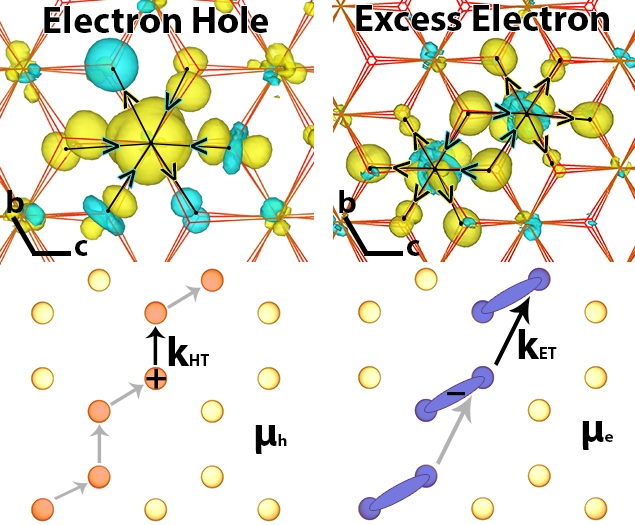Electron and Hole Mobilities in Bulk Hematite from Spin-Constrained Density Functional Theory

Transition metal oxide materials have attracted much attention for photoelectrochemical water splitting, but problems remain, e.g. the sluggish transport of excess charge carriers in these materials, which is not well understood.
In this work, in collaboration with Kevin M. Rosso from Pacific Northwest National Laboratory (USA), TYC researchers provide new fundamental insight into charge carrier transport in hematite (α−Fe2O3) with implications for its photocatalytic activity.
Using spin-constrained and gap-optimised hybrid density functional theory, we find that upon ionisation the electron hole relaxes from a delocalized band state to a polaron localised on a single iron atom with localisation induced by tetragonal distortion of the 6 surrounding iron-oxygen bonds. By contrast, the excess electron induces a smaller distortion of the iron-oxygen bonds resulting in delocalisation over two neighbouring iron atoms. We find that 2-site delocalisation is advantageous for charge transport due to the larger spatial displacements per transfer step, resulting in an electron mobility a factor of 3 higher than the hole mobility.
Featured in: Journal of the American Chemical Society (DOI 10.1021/jacs.1c13507)
Authors: Christian S. Ahart, Kevin M. Rosso, Jochen Blumberger
